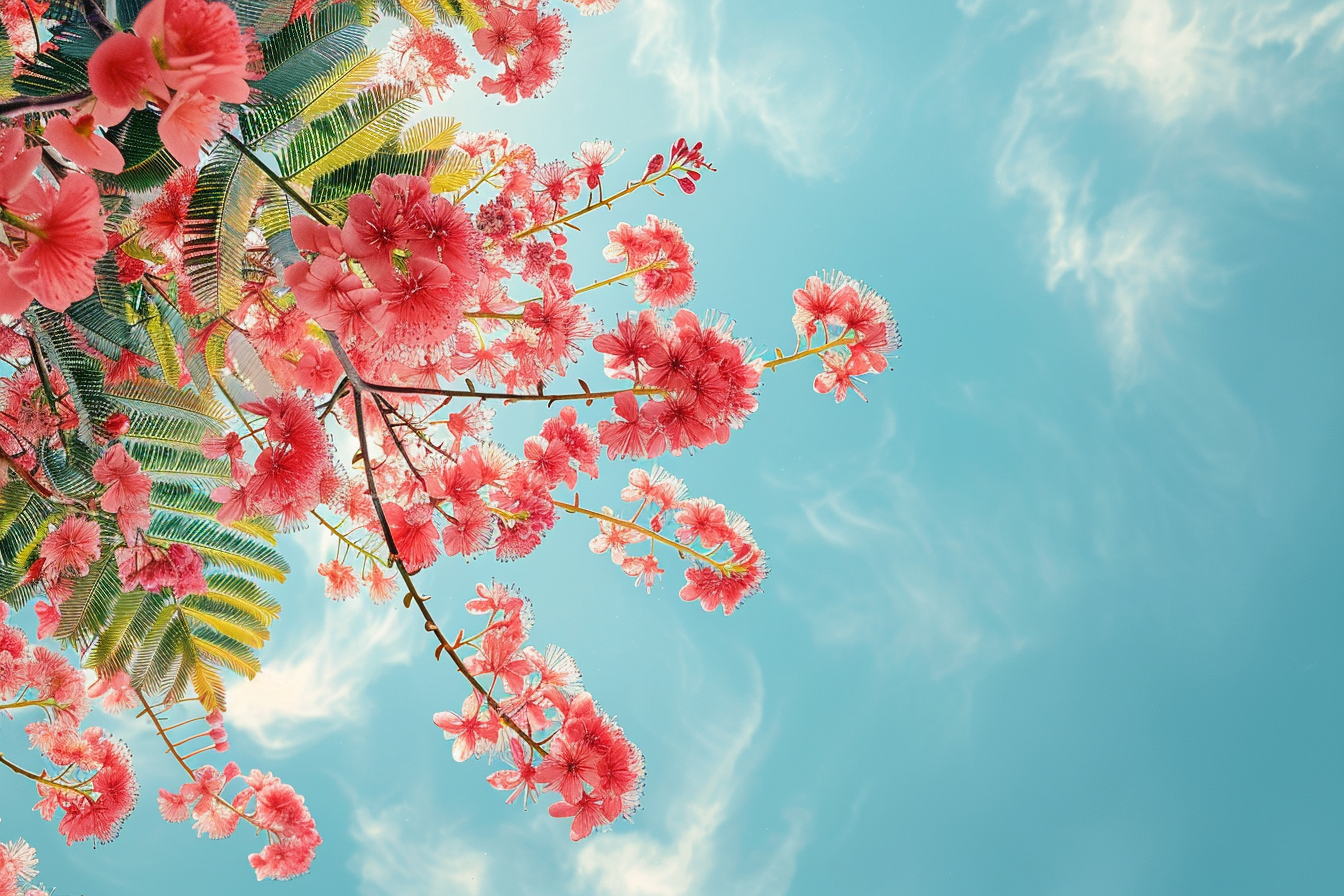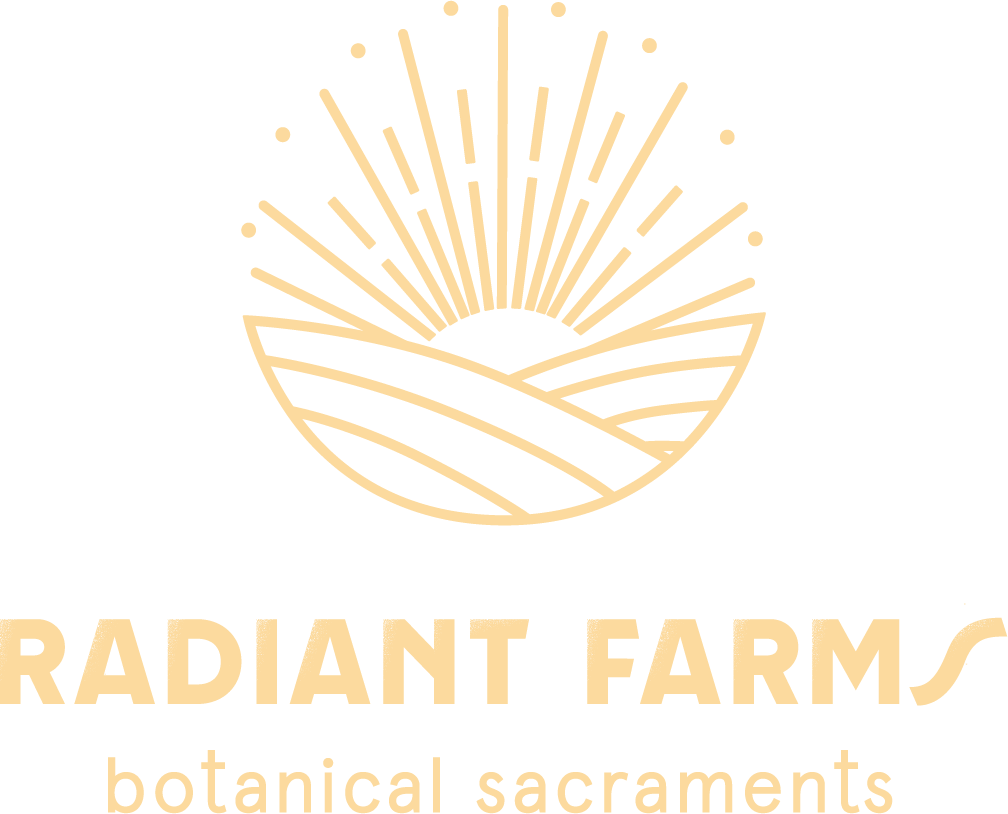
I turn a long-handled wooden spoon in five gallons of steaming liquid, bringing up a dense purple paste from the bottom, making sure it dissolves evenly, self-hypnotizing through repetitive motion. Mason jars of various sizes, and funnels and ladles and filters, are scattered about the counters, along with local honey and tumblers of fresh rosemary, spilanthes, mint. Flocks of tiny yellow finches and various other songbirds murmur about, the breeze caresses my bare legs, a landmate in the distance collects blossoms for this morning’s flower mandala. As I stir, I hum a low chant and think of all the people who need love energy and pull that through my body and hands and voice and send it into the tea. When it reaches a just-so medium-density, medium-transparency brownish pink, I turn off the fire and my friend K and I work to transfer this heart-opening brew, my Bobinsana offering, into serving-scale jars for ceremony.
---
Part of falling in love with anything is in paying exquisite attention, and the plants are no different.
I loved this plant first because of how she made me feel.
My friends K and F brewed and served a light tea made from the fresh blooms on our corner of Hawai'i, and my heart sang a new kind of joyful song 15 minutes into my first cup. And as I grew to know Bobinsana, I loved her more: for her beauty, her sturdiness, her versatility - and aside from such transactional things, for how she simply belonged, taking her perfect place in the web of life on the land we called home.
Bobinsana is called the river siren, the mermaid of the river.
Her blossoms are a feathery pink tickle duster of a most delicate construction, the petals so narrow they could all be stamens. She is called the powderpuff, and carries the scent and fruity sweetness reminiscent of Hibiscus. Officially, she is Calliandra Angustifolia, family Mimosaeae. She grows on this Hawai’i land- and in the Amazon and in Dominica and in fact throughout the tropics.
In the places where plants are considered to have co-evolved with humans to deal with the common challenges of being in a body, it is said that she can guide a person to a feeling of endless love, expand the imagination, cure heartbreak, soothe the grieving, promote relaxation, facilitate spiritual insights and invite vivid and memorable dreams.
As I get to know the plant, I move into a curious interrogation of her.
What is going on with you, friend, I ask. How do you work, on what pathways, when are you used, in what concentrations, for whom, and where are you contraindicated. I dive into the research and find much more than a heartache helper: this Amazonian plant is a self-contained pharmacopeia. Various parts (bark, stem, leaves) are used in Peru and Ecuador for everything from bone pain and rheumatism to wound-healing. It’s known as a contraceptive. It’s used to treat uterine disorders. The list goes on. But this particular plant has limited data sets, limited public information on alkaloids, actives, or pathways.
In the first pass, I find anecdotal information on Erowid and Reddit and on various ethnobotanical sites, and in the Encyclopedia of Psychoactive Plants. I do firsthand interviews with our Ayahuascero, the tribal shaman who comes to see us twice a year. I meet with those that collect the flowers and go through the 8-week long process to transform them into a concentrated paste. I find a mainland chemist to partner with who will work to fill in the knowledge gaps.
And like any good witch, I begin cooking, trying different densities for myself and enthusiastic friends. I order the paste directly from the tribes, a 30:1 concentration that comes in tar-dense sticky packets, which even though it is fully legal to import gets returned to sender by US customs two out of every three times.
On a side note, this I have come to expect: that the things I am most interested in, such as expanded perception, nonviolence, freedom, healing, beauty, joy… and the practical systems and means to most reliably achieve those states… are often not supported by dominant systems. And that, like customs, what people don’t understand they often simply “return to sender” when it hits their borders, a sort of automatic rejection reflex. Like an organ transplant, the system sometimes says no, even when the incoming stranger might help the organism as a whole survive.
But sometimes, it says yes. And that is enough to begin moving a system toward change.
Over time, my journals, both digital and handdrawn, fill up with notes on dosages, responses, reactions. We do a formal test with 120 stuctured volunteers, and settle on 150 mg per serving, which seems to lighten everyone, and out of caution we don’t serve pregnant women or those seeking to become pregnant, or anyone on SSRIs or MAOIs, because the feelings and body sensations reported by Bobinsana drinkers reflect the same descriptions as plants known to work as SSRIs, SDRIs and SNRIs. As the science comes in, we have more definitive guidelines on interactions.
In the meantime, I trust the traditional teachers. I cultivate what my genius friend KJoy calls the subtle intelligences (intuition, energetics, deep listening), I talk to the other non-clinical investigators, witches and practitioners, gather data and learn.
Which brings me back to this fine Sunday morning in November, where I stand surrounded in infinite: beauty, breathing, and stirring the pot.
-Christine
Note: This piece is not in Mantra, Tantra and Ayahuasca: Sex, Drugs and Rock n Roll in Search of the Sacred. Bobinsana is more of a daily medicinal, a subtle teacher, not a psychedlic conduit. It is, however, a pointer to the eco-spiritual awakening that comes with trusting the plants and planet and the rest of nature. If you are interested in trying Bobinsana, please drop a note with your city and if we are in your area for ceremony, we’ll invite you.
